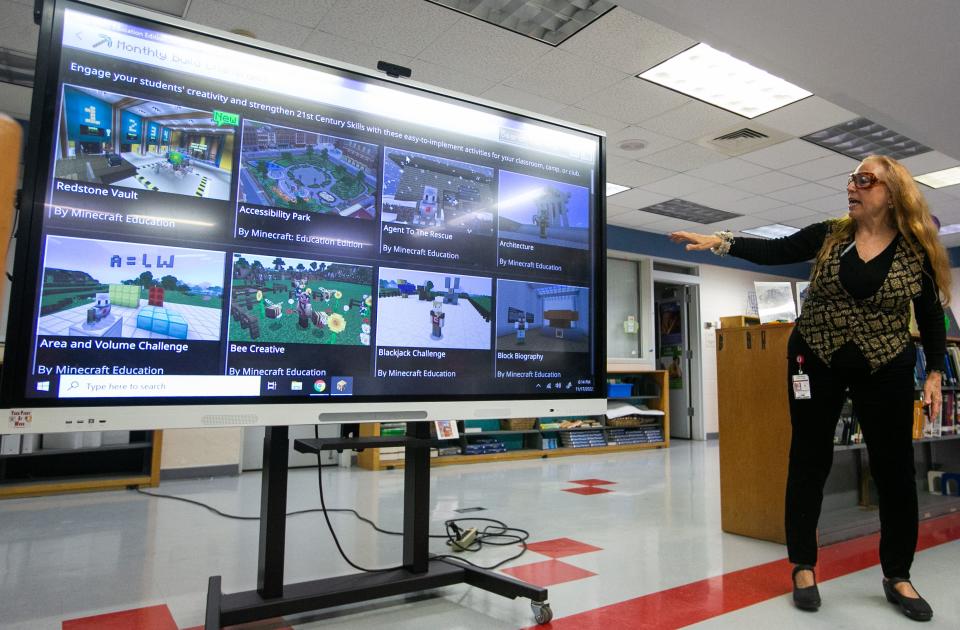Understanding importance of media literacy is more important than ever | Mark Mahoney
Information on the world around us comes not only from words on paper. It is also presented, more and more, through the many-varied powerful images and sounds of our multimedia culture.
We are exposed to hundreds — even thousands — of images and ideas from morning to night through television, websites, movies, digital media, email, video games, music, billboards and more.
The messages, images, information, and experiences we engage with every day through media help shape our beliefs, attitudes, values, and identity. And with the newest entrance of artificial intelligence (AI), the need grows ever more important for being media-literate.

As an educator with a focus on health and wellness I have been concerned for many years about the importance of media literacy education as well as its analysis. Although my interest has largely focused on the area of health and wellness education, media literacy is much more widespread and affects most facets of our daily lives.
The column today is meant to provide an overview with relation to media literacy education with a focus on the educational setting. Additional resources and educational content is provided at the end of this column.
A prior column from 2017 focused on media literacy and its role in health and well-being and can be accessed at tallahassee.com.
One definition of media literacy
The Center for Media Literacy defines media literacy as “a framework to access, analyze, evaluate, create and participate with messages in a variety of forms — from print to video to the Internet.” CML also notes that media literacy builds an understanding of the role of media in society as well as essential skills of inquiry and self-expression necessary for citizens of a democracy.
Like reading or math, media literacy is learned. The ability to navigate within our complex and ever-changing media landscape depends on acquiring skills and tools to know how to consume and evaluate information, ask critical questions, avoid manipulation, and engage in digital spaces safely and confidently. Unfortunately, these skills are not widely taught to our young people – yet.
Importance for educating children
Media literacy is literacy. Ideally, all school districts would incorporate media literacy into all subjects at all grade levels. Media literacy is not meant to be an add-on to an already full curriculum. It’s an educational approach or practice that establishes a habit of inquiry that is content-neutral and can be applied in any classroom There are a number of potential policy approaches that will help us arrive at this ideal.
Social media: Florida Gov. DeSantis has legal concerns with House bill banning social media for minors
From statutory laws mandating media literacy teaching in schools, education standards that explicitly include media literacy education, instructional resource recommendations, and funding for teacher training – there are a number of ways to get media literacy education into more classrooms.
The messages, images, information, and experiences we engage with every day through media help shape our beliefs, attitudes, values, and identity. Used well, media can entertain, inform, and engage our children in positive ways. Media use helps young people become more competent in a digital age. Additionally, media allows for the potential for children and young people to express themselves and connect with others who are like them.
Once one acknowledges the effects of media on attitudes and behavior, media literacy teaches youth to understand, analyze and evaluate advertising and other media messages, enabling them to actively process media messages rather than passively remain message targets.
It might be said that media no longer just shape our culture — they are our culture.
So, we can see the importance of being media-literate to help our youth to navigate through the ever-present, almost overpowering media presence in their lives. Providing our children and youth with the knowledge to assess media content gives them the skill-set to allow them to become more independent–minded individuals through evaluating the role of media in their lives and acting on that content in an informed, proactive manner.
Additional information/resources
Check-out the following on-line resource for an in-depth look at media literacy at edtechbooks.org
Another resource that may be beneficial in helping to teach children to be critical consumers of media is available at verywellfamily.com.
Look at the extensive listing of teacher education materials for K-12 students available through Ithaca College’s Project LOOKSHARP at projectlooksharp.org.

Mark Mahoney has been a Registered Dietitian/Nutritionist for over 35 years and completed graduate studies in Public Health at Columbia University. He can be reached at marqos69@hotmail.com.
This article originally appeared on Tallahassee Democrat: Understanding media literacy helps shape our health, our world

